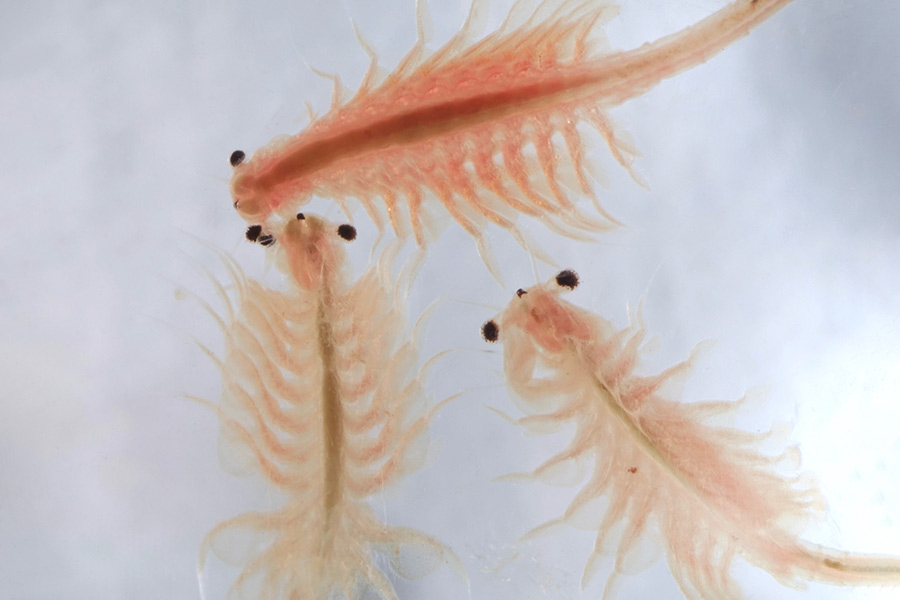≡
Definitions
carotenoid: A plant defense chemical that builds up in organisms.
diapause: A period of time where an organism's metabolism or development is slowed down in order to withstand harsh conditions (think of extreme hibernation).
halophile: A "salt-loving" organism that thrives in high salt concentrations. Many of the bacteria and algae species in the Great Salt Lake are halophiles.
hemolymph: The body fluid of brine shrimp (and other "open system" crustaceans).
hyperosmotic (synonym – hypertonic): A solution that has a higher salt concentration compared to its surroundings.
hyposmotic (synonym – hypotonic): A solution that has a lower salt concentration compared to its surroundings.
hemoglobin: A molecule within the body fluid that binds oxygen and carries it to specific places within the body.
naupliius: The first free-swimming stage of life for a brine shrimp. They either hatch from cysts or from eggs inside the mother's uterus (plural: nauplii).
osmoregulation: The maintenance of a constant electrolyte equilibrium within an organism by controlling the levels of salts in the circulatory system.
ovoviparous: Live birth. In brine shrimp, eggs hatch within the uterus into nauplii (this is also known as "viviparous" — they mean the same thing).
oviparous: Birth of eggs that hatch outside of the body. In brine shrimp, these would be as hard cysts, which remain through the winter and hatch as temperatures rise in the spring.
phytoplankton: Single-celled algae, which use photosynthesis to grow in aquatic environments. They are the main food source for brine shrimp, and their presence and distribution dictates much of the shrimp's life history and development.
parthenogenetic: Asexual reproduction where the parent produces a diploid offspring without fertilization.
salinity: The amount of salt dissolved in a body of water, often represented as a percent. For example, the Great Salt Lake's salinity ranges from 8–17%.
zygogenetic: Sexual reproduction through the combination of male and female sex cells (i.e., sperm + egg = zygote).







